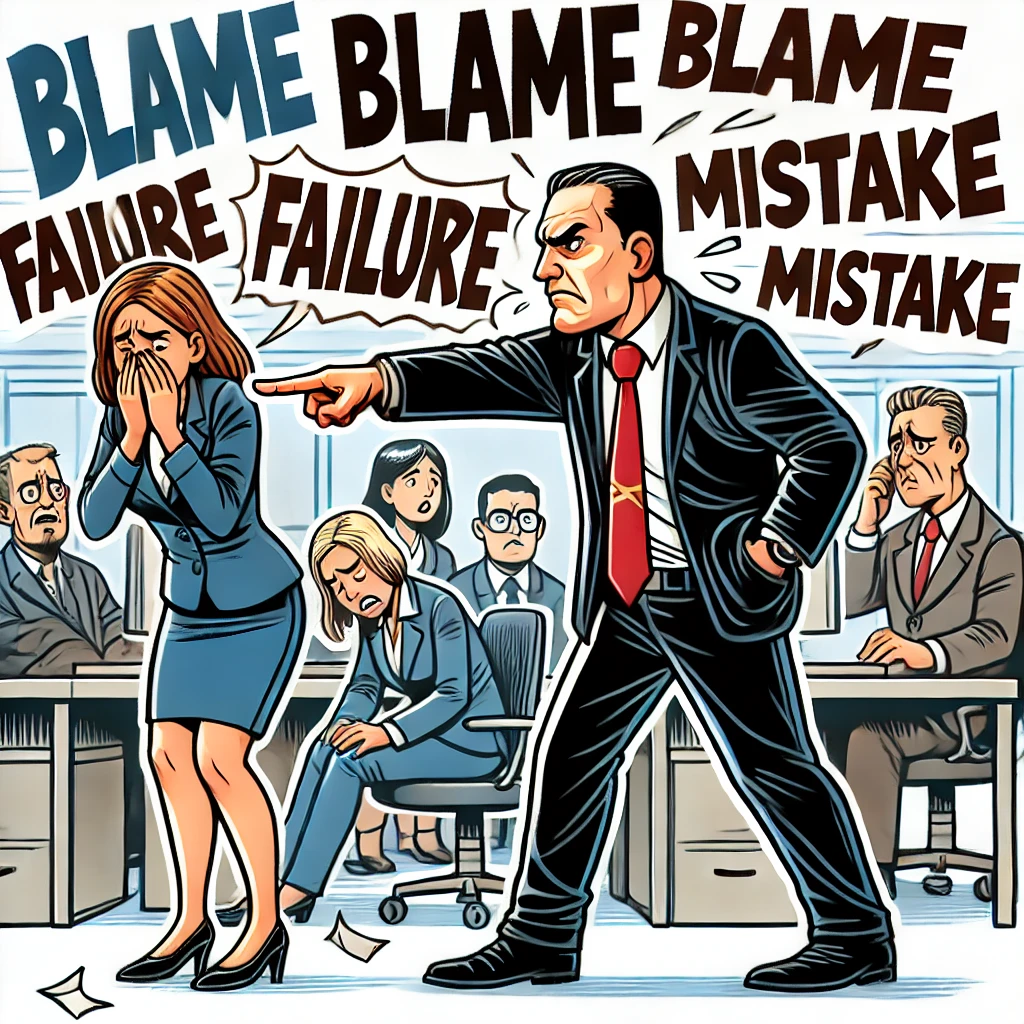
The Self-Preservation Mentality: A Culture Killer in the Workplace
Imagine this: You propose a bold solution to tackle a persistent challenge, you receive support! Then when your manager deflects accountability and prioritizes their own reputation over the team’s when the solution fails. It’s a scenario many employees recognize, and it reveals a damaging mindset that hurts progress. It’s a scenario that frustrates countless employees and undermines workplace morale. Have you ever worked under a manager who failed to support a risk you took, leaving you to navigate the fallout alone? Or perhaps they reacted emotionally rather than logically, prioritizing self-preservation over team success. It’s a culture killer, eroding trust and innovation while fostering a fear-based environment. Imagine a team where every mistake becomes an opportunity for blame rather than growth—the ripple effects damage not just morale, but the entire organization’s ability to thrive.
Workplace culture is often shaped not only by official policies but also by the behavior of those in managerial positions. While strong leaders inspire teams, drive innovation, and foster trust, there exists a counterproductive mindset that can derail an organization’s potential—the self-preservation mindset (often referred to as the “cover my ass” CMA mentality).
This behavior, often exhibited by managers rather than true leaders, manifests in ways that prioritize personal protection over team success. Managers with this mindset prioritize deflecting blame and safeguarding their own reputation over supporting their team members or fostering a healthy work environment. The result? A toxic workplace culture that stifles trust, innovation, and employee morale.
Spotting a Culture Killer: Signs of a Self-Preservation Mentality
Managers operating with a self-preservation mindset often exhibit the following behaviors:
- Deflecting Responsibility: When mistakes happen, these managers are quick to shift blame to others, rather than taking accountability for their role in the situation.
- Avoiding Difficult Conversations: Instead of addressing challenges or conflicts directly, they sidestep issues, or are never honest about what the real problem is, leaving employees to deal with unresolved problems.
- Lack of Advocacy: They fail to stand up for their team members when it matters most, especially in situations involving higher management or external scrutiny.
- Micromanagement: In an attempt to control outcomes and avoid blame, these managers excessively micromanage, stifling creativity and autonomy.
- Fear-Based Decision Making: Decisions are made based on minimizing personal risk rather than what’s best for the team or organization.
The Ripple Effect: Impact on Workplace Culture
A self-preservation mentality creates a cascading set of challenges that ripple across the organization, leading to a host of negative outcomes:
- Erosion of Trust: Employees lose faith in their managers, knowing they can’t rely on them for support or advocacy.
- Low Morale: Constant blame-shifting and lack of accountability drain the energy and enthusiasm from teams.
- Reduced Innovation: Fear of failure discourages employees from taking risks or thinking creatively.
- High Turnover: Talented individuals often leave environments where they feel unsupported and undervalued.
True Leadership in Action: A Different Path
True leaders operate with a mindset diametrically opposed to the self-preservation approach. They:
- Own Their Mistakes: Leaders set an example by taking accountability, demonstrating that it’s safe to admit errors and learn from them.
- Defend Their Team: In challenging situations, leaders stand up for their people, showing they value and respect their contributions.
- Encourage Growth: By fostering an environment of psychological safety, leaders empower their teams to innovate, take risks, and grow.
- Build Trust: Trust is cultivated through transparency, consistent actions, and genuine care for employees’ well-being.
Turning the Tide: Changing the Narrative
Organizations can effectively counteract the self-preservation mentality by fostering a culture of accountability and support. This requires targeted leadership development and structural adjustments. Here’s how:
- Provide Leadership Training: Equip managers with the skills and mindset needed to lead with integrity, empathy, and courage.
- Recognize and Reward True Leadership: Highlight and reward behaviors that demonstrate accountability, advocacy, and trust-building.
- Encourage Open Feedback: Foster a culture where employees feel safe to share their concerns about managerial behavior without fear of retaliation.
- Align Incentives: Ensure that performance metrics reward team success and collaboration, rather than individual self-preservation.
Final Thoughts
The self-preservation mindset acts like a cultural toxin, eroding trust, stifling innovation, and blocking sustainable growth. Organizations must actively root out this behavior and cultivate leadership that inspires, supports, and elevates teams. After all, great workplaces aren’t built on a mindset of self-preservation—they thrive on collaboration, accountability, and a shared vision for success.
The question for all managers to ask themselves is: Are you building a culture of trust and advocacy, or are you merely covering your own ass? True leadership starts with honest self-reflection and a commitment to continuous improvement. By doing so, leaders can create environments where teams feel empowered, valued, and supported.

